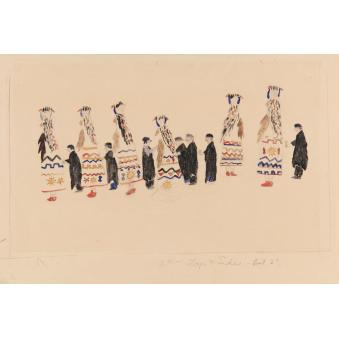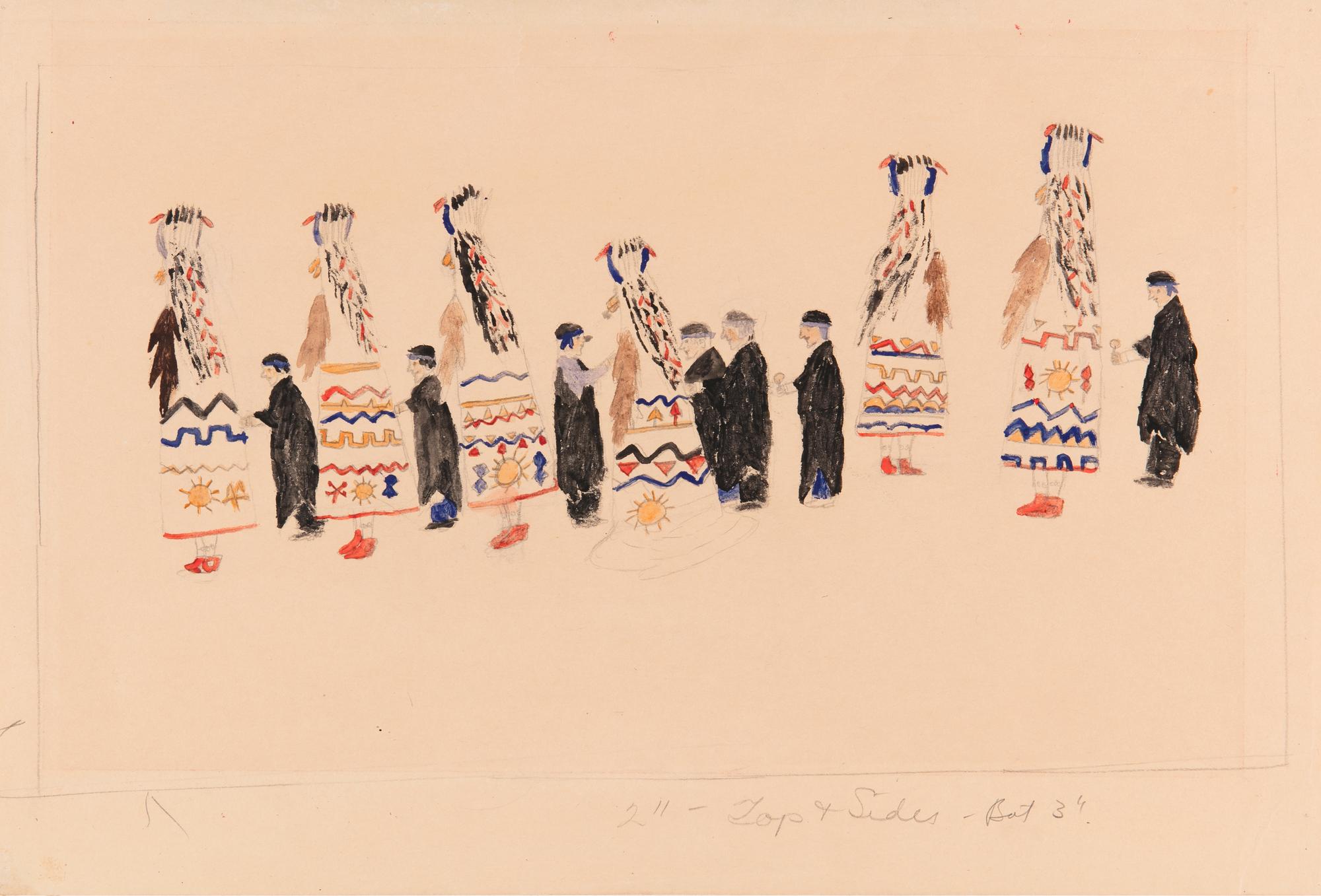
Photograph by Addison Doty. Copyright 2020 School for Advanced Research.
"Zuni Shalako"
Date: 1939
Artist or Maker: Beatien Yazz (Jimmy Toddy) (1928 - 2022)
Dimensions:
30.5 x 45.5 cm (12 x 17 15/16 in.)
Medium: paper | paint, watercolor | pencil
Credit Line: Gift of Sallie Wagner, 1983.
Place Made:
Apache County, Arizona, Southwest, United States, North America
Object Number: SAR.1983-12-134
Not on view
Tribal Collection Review RemarksAs per Jim Enote and Octavius Seowtewa during collection review visit June 20 and 21, 2012 (Events Record “Collection Review: Zuni Tribe, Review 8”): Though this work was painted by a non-Zuni artist, it portrays a Zuni cultural scene. IARC staff wanted to ask Mr. Enote and Mr. Seowtewa how to approach the matter of Zuni Shalako imagery created by non-Zuni artists. They explained that since such paintings were made by non-Zuni artists, they are inaccurate representations of Shalako. They asked staff to be sure to explain to researchers and image requestors that such scenes are not accurate. If the researcher wishes to use the work to inform his or her understanding of the Zuni Shalako ceremony, or to illustrate written works about this topic, Mr. Enote and Mr. Seowtewa asked the IARC staff to not allow them to use non-Zuni made paintings for this purpose, due to the inaccuracies they contain. If the point of a researcher’s work is to illustrate inaccurate interpretations of the Shalako ceremony, then these works would be appropriate for that purpose.
This particular painting contains several inaccuracies. For example, the decorations on the Shalakos’ kilts are incorrect. Also, the attendants would not really hold rattles. Mr. Enote and Mr. Seowtewa surmised that the artist, who was not Zuni, may have attended a Shalako ceremony at some point and then later tried to remember what he saw. Since he was not a member of the Zuni community, he would not have entirely understood what he saw and inevitably included some inaccuracies in his rendering of the scene.
In Collection(s)
The Indian Arts Research Center, in collaboration with Native American community scholars, strives to present accurate collections records. Records may be updated as new information becomes available and is reviewed with the Native American community having cultural affinity to particular items. Please write to iarc@sarsf.org if you have questions or concerns related to the documentation.
